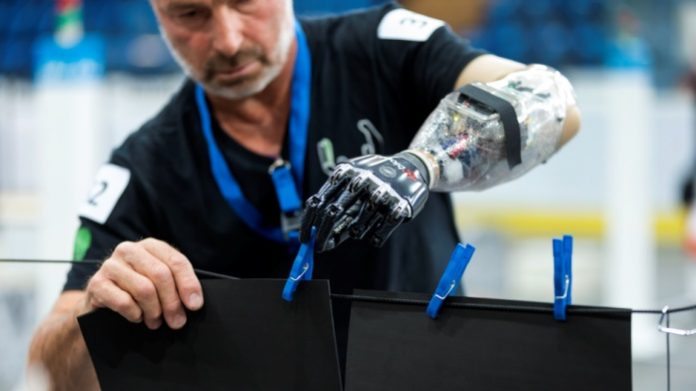Olympic events are meant to pick out the fastest, strongest, or most technical athletes, but for many people living with disability, even simple, everyday tasks can seem like Olympic-level obstacles. That was part of the thought process that led Professor Robert Riener of ETH Zurich to organize the first-ever Cybathlon.
Official Cybathlon Trailer.
This ain’t no Paralympics
Nicknamed the “Cyborg Olympics”, the Cybathlon brings together individuals with physical disabilities that use powered assistive devices. Starting on October 8th, athletes will compete in 6 disciplines designed to be relevant for daily life. Instead of jumping over literal hurdles, athletes may be asked to slice bread or sit down on a couch. The use of technology also allows the inclusion of athletes that cannot compete in the Paralympics – quadriplegics for example. Another key difference between this event and something like the Paralympics – the athlete is not the only one that gets a medal.
“Our athletes are called pilots, and we give 2 medals to the winners: one for the pilot and the other one to the developing team behind [the technology],” explains Riener.
Under pressure
Among the teams competing, only one hails from Canada. The team from Simon Fraser University, M.A.S.S. Impact (Muscle Activity Sensor Strip), built a pressure-activated bionic arm for the competition.
Their system consists of a strip of pressure sensors embedded around the socket of a prosthetic arm. The sensors detect movement in the muscles of the remaining limb as different motions are performed. These movement patterns are logged and analyzed by a computer. After a period of teaching, the computer can eventually predict what the user wants to do based on the pattern of muscle movements and move the prosthetic accordingly.
Building a better bionic hand. Video courtesy of SFU.
The technology was originally developed for stroke rehabilitation in Professor Carlo Menon’s lab at SFU. “Using it for controlling assistive devices was a natural next step,” says Lukas-Karim Merhi, leader of M.A.S.S Impact. Still, making it happen wasn’t easy. “Bringing researchers, clinicians (prosthetists) and volunteer participants together to create new technology requires a significant amount of time, coordination and funding.”
But it is precisely the combination of all these diverse people that has the potential to create better technologies.
User Perspective
Many assistive technologies are non-intuitive leading to limited acceptance or early abandonment of devices by end-users.
“Often developers do not talk or work closely together with users and medical experts,” says Riener.
The team from SFU is working closely with Paralympic skier Daniel Letain to get the user perspective right. He will be their pilot in the Powered Arm Prosthesis Race.
By working together, the team can surely make a M.A.S.S.ive impact in prosthetic arm technology.








































